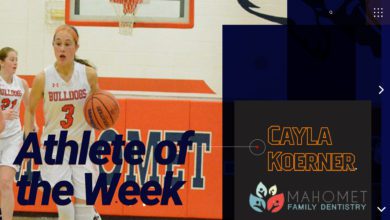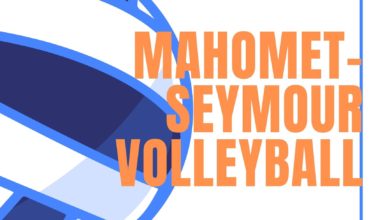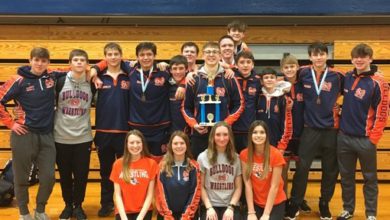Commentary: Kroner looks back on career as he is inducted into National Wrestling Hall of Fame

By FRED KRONER
My introduction to wrestling occurred in my sophomore year of high school. Our P.E. coach, Randy Bowman, did four-week units on a variety of activities.
In the late fall of 1970, he conducted a unit on wrestling. This was probably easy for him as he was the Mahomet-Seymour varsity wrestling coach.
He showed us the basic moves and how to effectively use them: the sit-out, the takedown, the half-nelson, a pinning combination and so on.
The final few days of the unit, he held championships in each of his P.E. classes (he had boys only) and divided the class into approximate weight classes. I was with two other guys in whatever the heaviest weight class would have been called.
We had to wrestle each other to determine the winner in our weight class. Somehow, I was able to beat both of those kids, even pinning one of them, but I must not have been too impressive.
Coach Bowman never asked me to come out for the wrestling team!
While I was in high school, that was my only exposure to wrestling. Bowman left for LeRoy High School the following year and we never had any more units on wrestling. I was never interested enough to attend a high school wrestling match while I was in high school.
Fast forward a few years. In March of 1976, I was working part-time for the Champaign-Urbana Morning Courier while attending the University of Illinois.
One of the full-time sports reporters was covering the IHSA state finals, held at the UI Assembly Hall, and asked me to join him to get quotes from area wrestlers after matches.
Sounds simple enough, I thought.
I soon learned I was totally unprepared for the assignment. Getting the quotes was easy enough — once I could locate the wrestlers.
When the P.A. announcer would call two wrestlers to one of the six mats that were positioned on the Assembly Hall floor, I didn’t realize that they were actually the ones on deck. In other words, the announcement would be made and two people would start wrestling on Mat 1, for example.
However, they weren’t the two who had just been called to Mat 1. They were the ones who had previously been called to Mat 1.
Once I figured that out, there was the challenge of keeping track of multiple mats. There might be three or four area wrestlers competing on various mats simultaneously and there’s no way of knowing which one will end first.
I’m not sure how many quotes I delivered in 1976, but I’m guessing it wasn’t many.
I remember the big to-do that year was a senior wrestler from Elmhurst York winning a state title at 98 pounds, marking the first time in history that the son of a former state champion was victorious in the finals.
Mike Farina was the 1976 titlist. His dad, Chuck Farina, had triumphed back in 1945 for Maywood.
For me, the main significance of the 1976 state tournament is that it marked the first of 40 in a row that I would cover personally.
By the time I had my first full-time job (1978-79 school year at the Bloomington, Ill., Daily Pantagraph), I quickly learned that the sportswriters all clamored for the basketball coverage assignments, but there wasn’t much competition for the wrestling beat.
I embraced it as something I could do without having to share with my colleagues, and I enjoyed it immensely.
I also discovered that since there was little newspaper coverage in the sport of wrestling until the state series started, the athletes and coaches were more than ready to be interviewed by the media.
By the time I joined The News-Gazette — just after the 1981 wrestling state tournament had ended — I was fully entrenched in the beat.
Long before I had arrived, The News-Gazette had been publishing a weekly Wrestling Honor Roll for its 20 or 25 area schools which offered the sport.
As a statistical aficionado, I loved to compile this. It was really quite simple to figure the point totals: whatever a wrestler did in a match to determine the outcome was what was used.
For example, a pin was worth six team points in a meet and, thus, six points in the Wrestling Honor Roll. A loss by a regular decision meant a subtraction of three points.
People not familiar with the nuances of wrestling, however, often needed explanations on how the point total was reached.
They couldn’t understand how someone with a sub-.500 record could be listed ahead of someone with an above-.500 record.
Here’s a good illustration:
Wrestler No. 1 had a 7-10 season record. All seven wins were by pins (42 positive points). All 10 losses were by regular decision (30 negative points), giving this individual an Honor Roll total of 12 positive points.
Wrestler No. 2 had a 10-7 record. All 10 wins were by regular decision (30 positive points). Three losses were by pin (18 negative points) and four losses were by regular decision (12 negative points). This individual would have zero Honor Roll points and would be listed behind the person who had the better overall won-loss record at the same weight.
After a few years at The News-Gazette, I began covering regular-season tournaments, too, starting with the Tolono Unity Invitational the week before Christmas and continuing with the Mahomet-Seymour Invitational, Urbana Invitational, LeRoy Invitational and a few conference tournaments before the three-week postseason started with the regionals, followed by sectionals and state.
I still covered basketball, too, but did most of that during the week so that I had my weekends free for wrestling.
I will never forget the first time I received any recognition for my wrestling coverage — other than an occasional thank-you while at the grocery store — was in 1984.
I was tipped off by the Mahomet-Seymour coaching staff and one of the Bulldog wrestlers that I would want to attend the annual Illinois Wrestling Coaches and Officials Association postseason banquet, held on a Sunday in suburban Chicago.
I wasn’t given a reason, just that I wouldn’t want to miss it. Out of curiosity, I attended.
Until that day, I had no idea there was even an award called IWCOA Newsman of the Year.
I was totally blown away to be the recipient that year. I wasn’t even 30 years old and was getting statewide recognition for doing something I loved doing.
Something about that just didn’t seem right. I still find it a little hard to comprehend, being rewarded for doing a job.
I treasured the honor, of course, just as I did in 2009 when I became the first person in Illinois to win that recognition four times. Unreal!!
Since retiring from The News-Gazette, I have had the good fortune to continue writing about wrestling and the exploits of the elite athletes who reach the state finals. I had a brief stint with the (now-defunct) Mahomet Citizen newspaper before joining the online Mahomet Daily in 2017.
The 2021-22 IHSA wrestling state tournament was the 47th in a row that I was involved with in some capacity, and I’m looking forward to extending that total in the future.
Fifty seems like a nice number.
I’ve been beyond blessed with the recognition I have received from various wrestling organizations. The IWCOA elected me to its Hall of Fame in 2020 (delayed until 2021, thanks to COVID-19) and the National Wrestling Hall of Fame decided to induct me into its Hall of Fame on Sunday (Oct. 16, 2022) in Bloomington.
All of this attention for a person whose sum total of on-the-mat wrestling accomplishments were two wins in P.E. class in 1970!!!
The National Hall of Fame Class of 2022 will include six new members. Others to be inducted are Central Illinois residents Joe Summerville and Andy Warner as well as Rex Branum, Ralph McCausland and Jim Raabe.
As a side note, the 1983-84 wrestling season was memorable for me for another reason beyond the Newsman of the Year award. The Class 1A heavyweight state champion was LeRoy High School senior Ron Oliver, who won all 42 of his matches that year.
Oliver’s coach was the same Randy Bowman who used to be my high school P.E. teacher, and as such was responsible for creating my interest in the sport by teaching a four-week unit on the sport. Like me, Bowman was just doing his job.
I had multiple opportunities to thank Bowman. After he retired from coaching, he rarely missed meets, even when they weren’t at home. He drove the team bus to the away locations.




